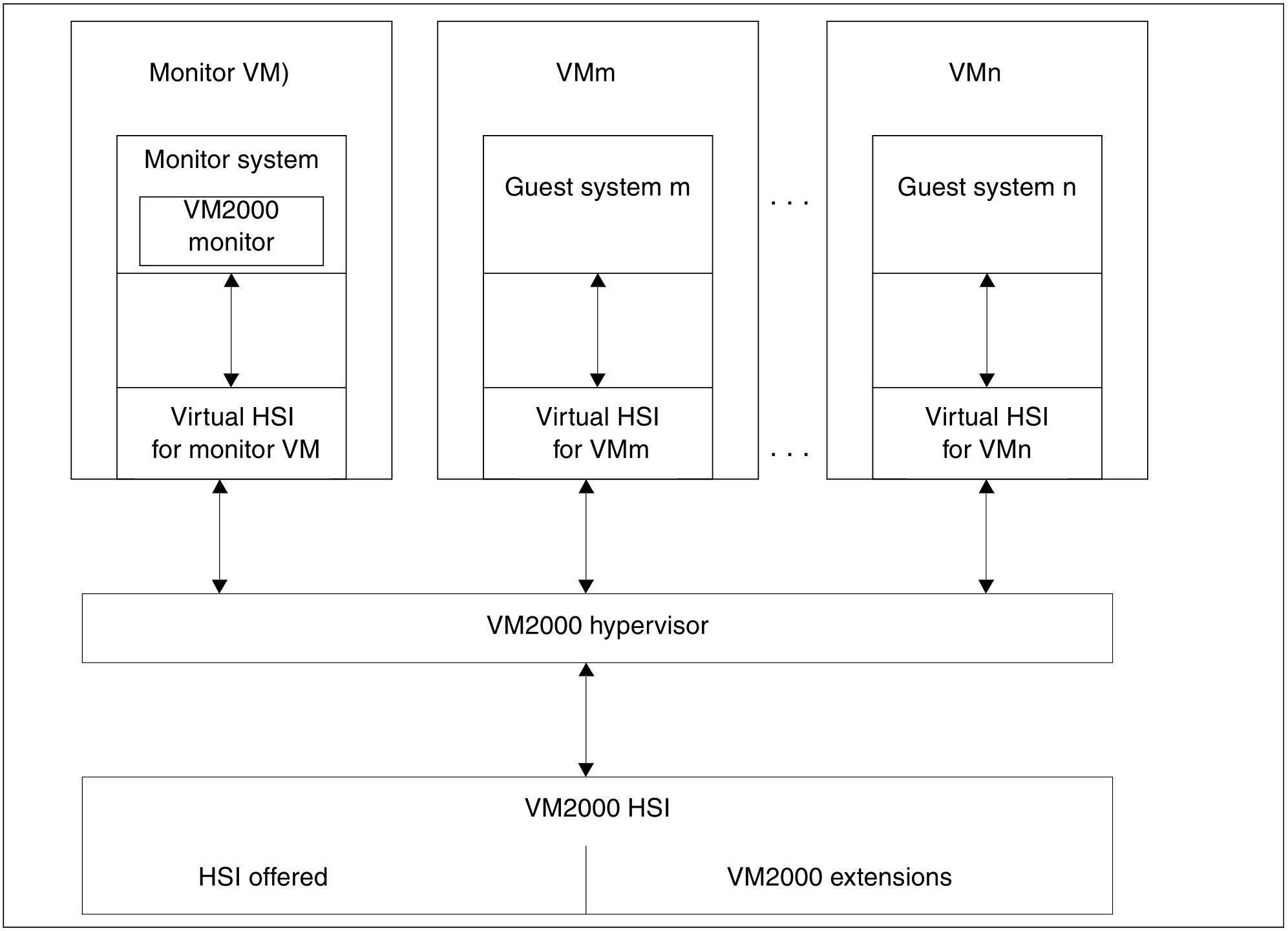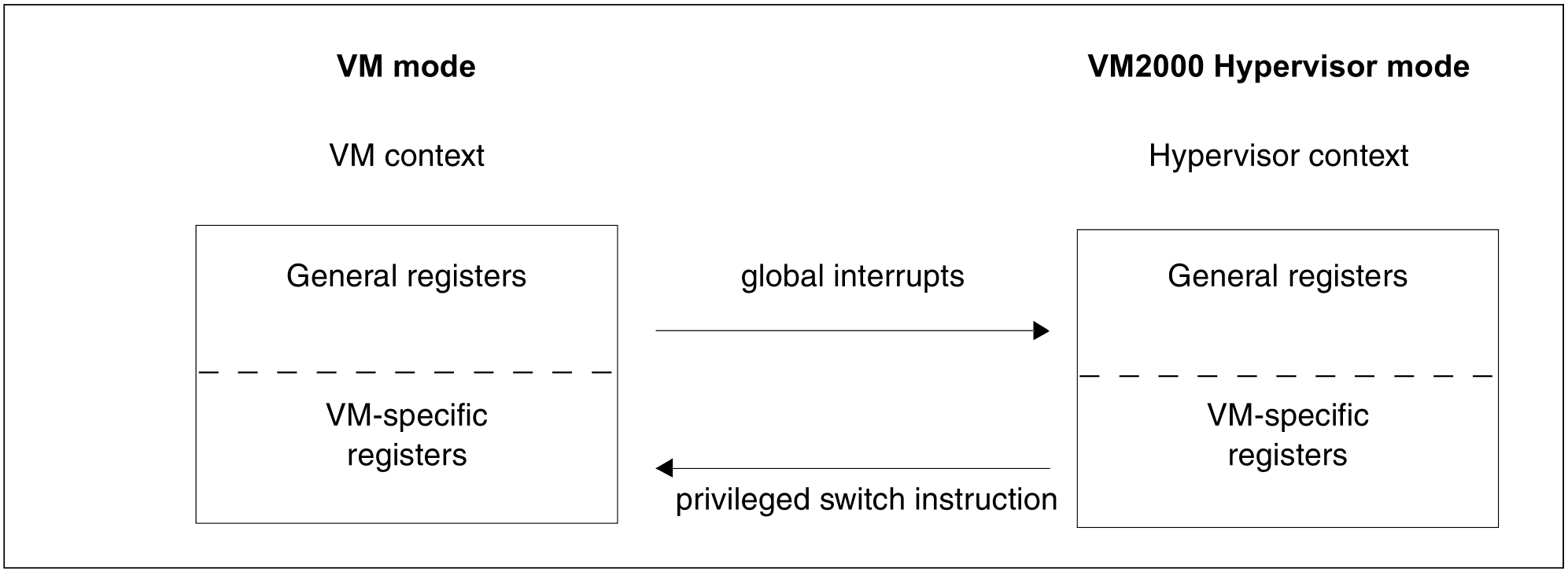For VM2000 operation, VM2000 functions have been added to the HSI offered by the firmware of the Server Unit. The extended HSI is referred to as the VM2000 HSI (see Figure 3).
The VM2000 hypervisor runs on the VM2000 HSI. It is the part of VM2000 which controls the execution of guest systems on the virtual machines (the scheduling).
The VM2000 hypervisor performs the following tasks:
Allocate the CPUs to the individual VMs
Handle global interrupts
Control machine error recovery
Emulate privileged instructions
Coordinate I/O operations for all shared devices
Process monitor jobs
In the VM2000 HSI, two processor states are possible (see Figure 4):
VM mode.
The guest systems run in this mode.Hypervisor mode.
The VM2000 hypervisor runs in this mode. Additional privileged commands only permitted in this mode are also available.
Each mode has a context, which is loaded into the Server Unit's hardware registers each time the processor state is activated. This context consists of
the registers for the processor states of the CPU
VM-specific registers and information.
In the context, a VM index which identifies the VM is entered for every VM. The monitor VM has always the VM index 1.
The transition from VM mode to VM2000 hypervisor mode is initiated by global interrupts, e.g. expiration of the time slice for the VM. In the case of global interrupts the context of the VM is stored and the VM2000 hypervisor context is loaded, thereby activating the VM2000 hypervisor.
There are also local interrupts, which do not activate the VM2000 hypervisor but are processed within the VM.
You can switch from VM2000 hypervisor mode to VM mode by issuing a privileged VM2000 hypervisor switch instruction.
VM2000
BS2000 VMs can be configured and operated only when the software product VM2000 is installed and configured.
Before VM2000 mode is initialized, the operating mode "VM2000 mode" must be set with the SE Manager, see "Operating modes". The monitor system can then be started, see "Starting the monitor system".
The VM2000 functions and commands offered are described in this manual. Fundamental VM2000 functions are also available to the SE server administrators via the SE Manager, see section "VM2000 functions in the SE Manager".
The full VM2000 functionality is available to the VM2000 and VM administrators via the user interface of VM2000 (see "VM2000 Operating strategy").
The BS2000 guest systems can work together with VM2000, see section "VM2000 in the guest systems".


